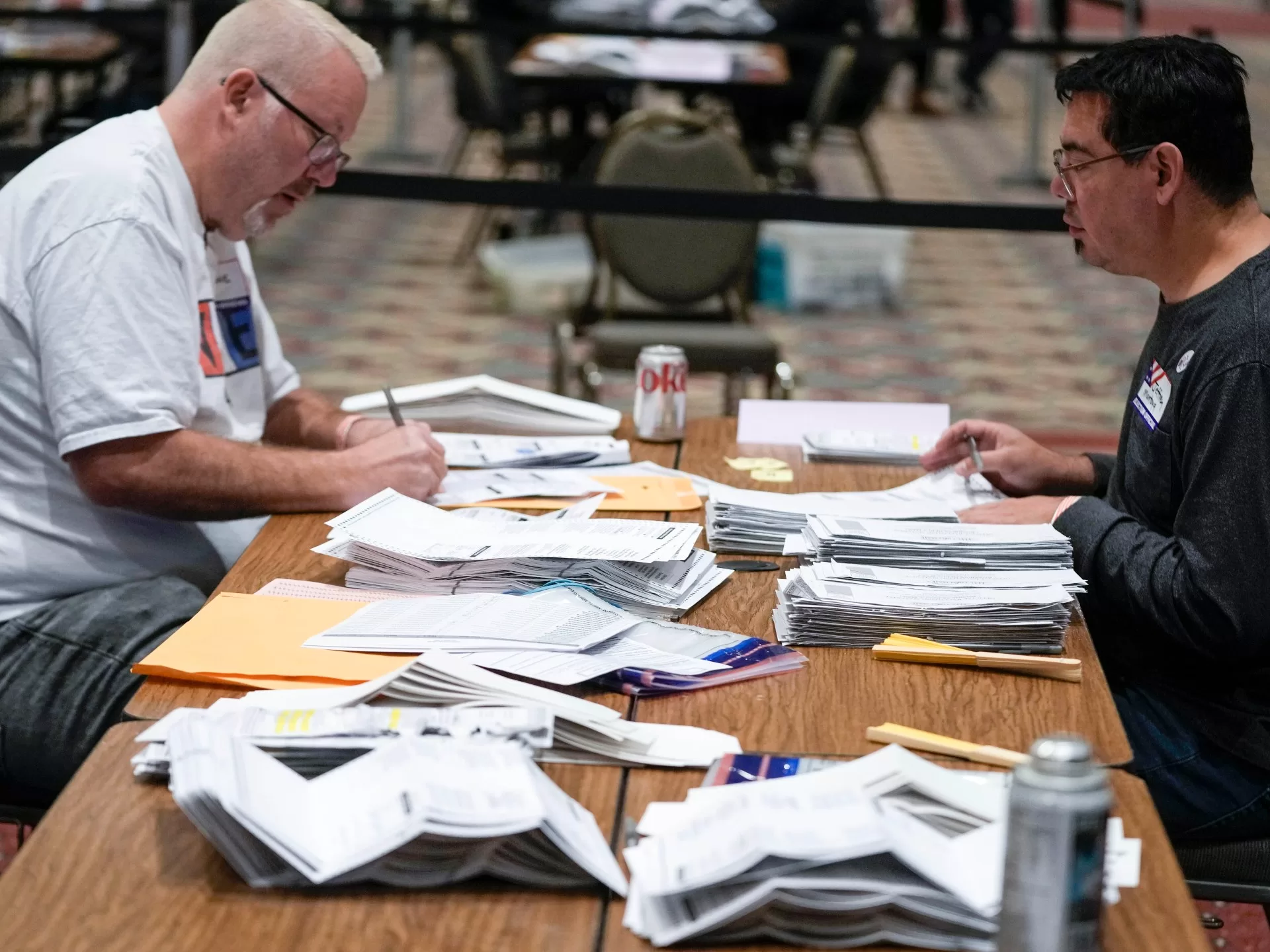EXPLAINER
US states determine ballot counting procedures in federal elections, with varying count times fuelling misinformation.
When will we know how many votes were cast for Republican candidate Donald Trump and Democratic candidate Kamala Harris in the United States presidential election on November 5?
It depends — and that’s normal.
In the US, there is no federal vote-counting process. Instead, counting procedures are left up to the states, and it potentially can take weeks for a final official tally to be released.
However, a clear presidential winner typically emerges within hours or days of polls closing on election day.
The lag between media organisations “calling” an election, and the official certification process can be confusing to voters.
It can also be fertile ground for election misinformation, including the false election fraud claims that Trump has continued to spread since 2020.
How do we know the winner before all the votes are counted?
News organisations have developed complex methodologies to estimate when a presidential candidate no longer has a path to victory in the Electoral College.
The Electoral College is the system that decides presidential elections: A candidate must secure at least 270 Electoral College votes – which are allocated by state based on the outcome of their respective vote – to win the White House.
News outlets effectively “call” each state for a presidential hopeful based on their methodologies, and those projections predict the overall winner.
Al Jazeera relies on The Associated Press, a news agency that has been calling elections for more than 170 years in the US, for this process.
Depending on how tight a race is, AP can sometimes determine a victor swiftly while other times it can take days.
For example, it did not declare Democrat Joe Biden the winner of the 2020 vote until four days after election day. It took another 16 days to determine that Biden was the winner in the state of Georgia.
OK, but how does the official count work?
All states allow votes to be cast in some form either in the lead-up to election day or on election day itself.
In some states, mail-in ballots can be verified ahead of time and then rapidly tabulated on election day, often through automated systems.
But others prohibit any processing until election day itself, which can lead to a time-consuming backlog.
States then have varying periods of time to self-audit the results. A recount can also be requested in most states depending on the vote margin, while others give voters time to correct a mistake – or “cure” a ballot.
Ultimately, state executives must issue so-called Certificates of Ascertainment showing the official, final vote tally by a specific date. This year, the deadline is December 11.
The president-elect’s victory then is officially certified by Congress in January.
Why is this controversial?
Tight races in key battleground states in 2020 – as well as an increase in mail-in voting amid the COVID pandemic – saw particularly slow vote counts.
That helped fuel unfounded claims of election malfeasance pushed by Trump and his allies.
Those false claims were furthered aided by the fact that Democrats typically vote more by mail-in ballots than Republicans.
As a result, in states where there are delays in counting those mail-in ballots, people can get the impression that there has been a late surge in Democratic votes – also known as a “blue shift”.
To counter misinformation, election experts have called on states to shore up their vote-counting processes.
While some key battleground states have done so, others – such as Pennsylvania, Wisconsin and Georgia – have done little to assure a speedier process this year.
Georgia’s election board has even moved to require hand counts of votes on election day, which experts warn could cause even more significant delays.
